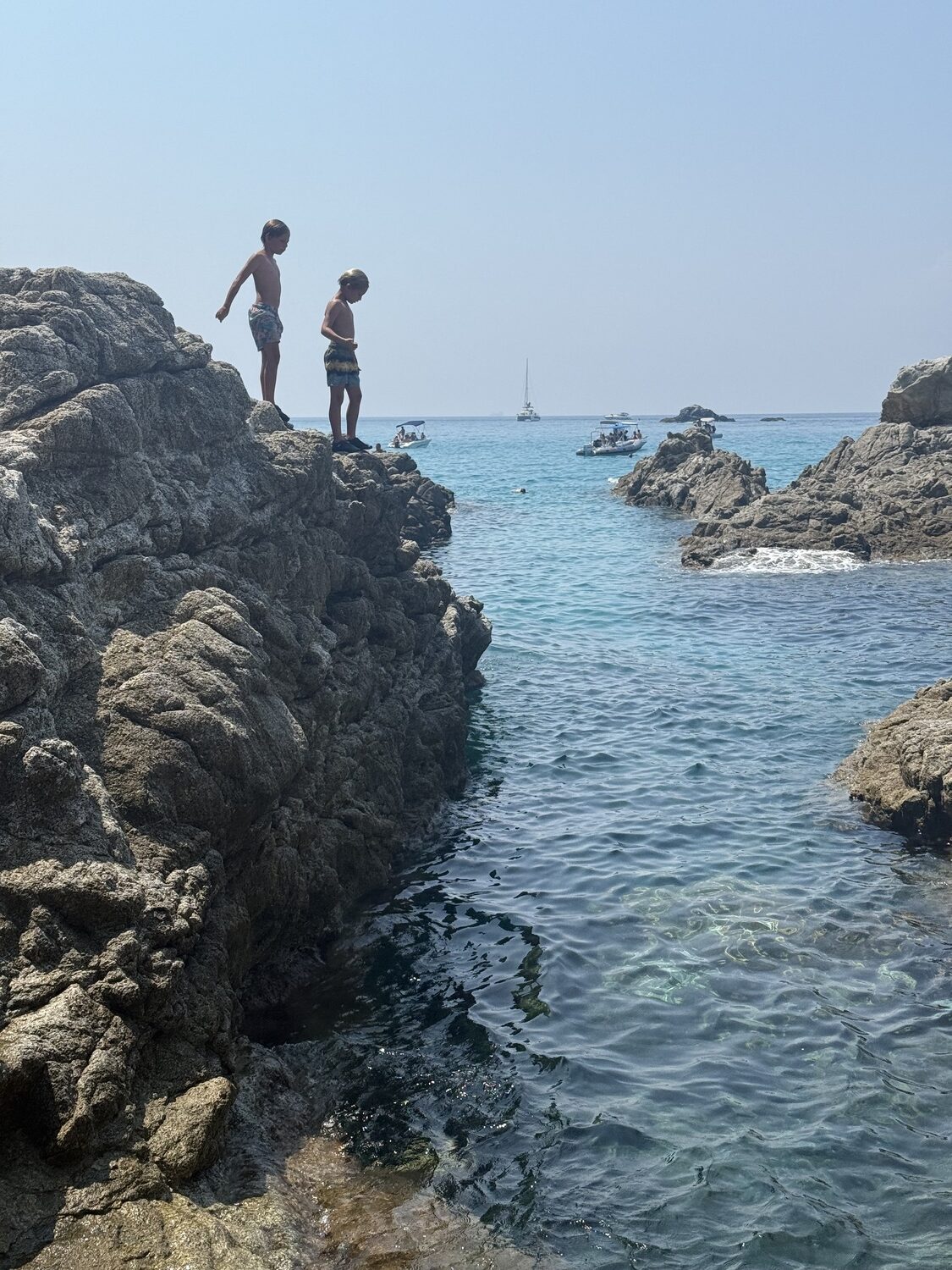
Lorenzo, our captain from Sea Sports Tropea, wanted to know how much we knew about sea urchins. We had boarded our boat — 10 people in all — in the beach town of Tropea, the beating heart of Calabria’s Costa degli Dei, or Coast of the Gods. From the harbor, we motored out past sandstone cliffs that hung precariously over crescents of beach. In August, they were dotted, far and wide, with tourists just like us, as well as their accoutrements: sunbeds, umbrellas, beach towels.
Stopping the boat in a remote section of rocky outcroppings — Formicoli, we would learn, a place believed to hold the remains of an ancient Roman port — Lorenzo dove down into the water and retrieved, for our pleasure, two black urchins, which, in the sunlight, gleamed red.
“Did you know that sea urchins actually come in different colors?” he asked. He held the urchins gently, so that they just brushed the bottom of his hand. The red hue wasn’t a figment of our imagination. Actually, the urchins could also appear yellow, blue or violet. One urchin was alive and then, suddenly, it was not. Lorenzo tapped it with a tool and opened it, cleaning the inside and offering up the creamy, orange insides for us to sample, right there in the Tyrrhenian Sea.
What do you eat in coastal Italy? Whatever is fresh off the boat.
A year earlier, inspired by photos a friend had posted in Tropea, I had booked an August home overlooking two desirable beaches in the hamlet of Capo Vaticano: Praia di Fuoco and Spiaggia ’A Ficara. These stunning spots, framed by volcanic rock, are only accessible by boat, or, in our case, by a 430-step walk down steep stairs from a private entrance. In the lagoons created by the tides, we snorkeled among schools of fish, the water so bright, aquamarine, and clear that it almost defied reality.
To pick a favorite spot on the Costa degli Dei, though, might be impossible. One day, invited as guests to relax on sunbeds at the tony Capovaticano Resort Thalasso & Spa, my family and I borrowed paddleboards and pedal boats (guests of the property can use these) and took to the open water, looking for grottoes and caves. The region is so famed for its grottoes, in fact, that Capo Vaticano’s most famous beach is named for them. Grotticelle.
At Stromboli, the resort’s al fresco midday restaurant, I ordered a plate of prosciutto and melon. What arrived was a simple symphony: pale cubes of melon that tread the line between cantaloupe and honeydew; pink and fatty sheets of prosciutto. Next came spaghetti with mussels and tiny clams. I drank a Hugo Spritz, one of the many sparklers the restaurant offers (the Hugo features elderflower liqueur, Prosecco, and mint).
If a trip to Europe normally finds me careening through streets and museums in search of cultural capital, this one was distinctly the opposite. I spent long days lounging before the idyllic sea, reclining until I could no longer bear the heat, then beneath the surface of some of the prettiest water I’ve ever seen. In the evenings, my family and I converged on our terrace, which, facing west, offered a sublime sunset, a pink-orange orb settling just to the side of Stromboli’s volcano, itself outlined in gray from a distance.
I ordered crudo at Blanca Beach Club by Valentour, a club on Tropea’s long, famous main beach, where our chairs kissed the water and where, for lunch, a covered balcony overlooked the sea. A refrigerated case boasting the day’s fresh fish displayed ruby-red tuna, prawns and silvery anchovies. My crudo arrived over slices of lemon: chopped amberjack and tuna, whole red prawns with their heads still on.
What is better about Calabria? The food or the sea? It’s hard to choose (and maybe you don’t have to). Produce stands proliferate, sold tiny green plums and Italian prunes; sweet and firm apricots; a variety of peach so fragrant and luscious that I wondered, after eating one, whether I had ever truly eaten a peach before. Tropea is known for its candy-sweet red onions, and each vendor sells them in long and braided cords, the onions tied together like a decorative bouquet. I asked for mozzarella at a local shop, communicating largely through gesticulation, and ended up with the softest, most generous cheese I had ever eaten.
On our last full day in Calabria, we hiked down, once more to Fuoco and Ficara. Donning water shoes, my husband and sons and I clambered along volcanic rock to a place where others were jumping into the azure sea. We did it over and over again, instantly hot when we arrived back on land, quenching ourselves, drenching ourselves.
It felt like it could never be enough, the time in the water, the time on land. Calabria, dried chiles hanging in the windows from nearly every street vendor, opened a door: Italy in all its nonlinear complications, line-skipping, careening drivers, but calmer and clearer in the south, a place for Italians and visitors both to step back from the world and relax.
I could not pack the fresh figs in my luggage, or the ‘Nduja, or the olives sold at nearly every market, but I could pack my memories, the smell of rosemary, creeping down stone walls, the woodsmoke in the evenings from open grills, the iron scent of the ocean and the song of cicadas, rising to a crest as the sun slipped into the volcano each evening. Come back, the place seemed to call, and I thought to myself how someday I would.